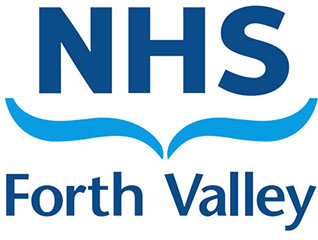The podiatry nail surgery service assesses and surgically treats nail conditions for people in the NHS Forth Valley area.
Through surgery, we aim to resolve chronic and acute toe problems not related to footwear.
Conditions we treat
- Ingrown toenail
- Thickened and damaged nails
- Very curved (involuted) nails
Who is Nail surgery for?
You will have an assessment appointment with a podiatrist to assess your suitability.
We will consider:
- Your medical history and medication
- Any allergies
- The circulation to your feet
- If you have had problems with a local anaesthetic before
You will be asked to confirm your medical history and relevant details. In some cases we may need to seek advice from your GP before we can decide if nail surgery is right for you.
When the surgery cannot be done in a local clinic, we will refer you on to the hospital to have this procedure carried out.
Procedure
Nail surgery is a straight forward procedure. After we assess you, and receive your written consent to go ahead.
You will have an injection of a local anaesthetic into your toe. This ensures the surgery will be carried out pain free. The appointment lasts around 45-60 minutes.
The two main procedures carried out are:
- Partial nail Avulsion: the side or sides of a nail only are removed.
- Total nail avulsion: the whole nail is removed.
A bulky dressing is applied after the procedure which stays in place for 2-3 days and you redress the toe at home.
Please note that you do not need to fast for this surgery.
Will it be painful?
Some people find the local analgesic slightly uncomfortable. Your toe will be numb during the operation so you will not feel any pain. The analgesic will take a couple of hours to wear off, and a recent survey we have undertaken found that 50% of people had discomfort when this happened. Normal doses of your usual painkiller are generally sufficient to reduce the discomfort e.g. Paracetamol. If the toe becomes extremely painful and simple painkillers do not reduce the pain, please contact your Podiatry Clinic.
Aftercare
All aftercare advice is provided at your nail surgery appointment with leaflets and photos to back up all information given.
If you are on an anticoagulant or any high risk medication you will be given an appointment to attend a local community clinic for redressing.
It normally takes six weeks for a partial nail removal to heal, and twelve weeks for a total nail removal.
Possible complications
Local anaesthetic
Complications are rare after a local anaesthetic. An example of a complication is an allergic reaction. To minimise the risk the lowest effective dose of anaesthetic is always used.
Phenol
On rare occasions a reaction to phenol can cause burning and blistering. If this happens it usually subsides in a few days.
Aftercare
Occasionally whilst healing, the toe may become infected and a course of antibiotics may be required from your GP. Whilst every effort will be made to provide a cosmetically acceptable outcome, the final appearance of the toe cannot be guaranteed and there is a very small chance the nail may re-grow.
Changing your dressing
- Wash your hands before removing the dressing. The dressing may be soaked under a warm shower; this will ease removal of the dressing.
- If there is any dried blood or other discharge on the wound this may be gently washed off under a warm shower. Do not use any soap or shower gel, just warm water.
- Wash your hands again, then dry carefully around the wound – do not dry the wound itself, leave it moist.
- Apply the dressing, as the Podiatrist has explained to you.
- Repeat every 2-3 days, only change in-between if discharge leaks through the dressing.
- Do not use any antiseptic creams or lotions on your wound.
- Please keep pets in another room whilst changing your dressing.
At your first dressing change, your wound will look clean and the nail bed will be red in colour. There may be small grey/ dark patches on the nail bed this is due to the action of the chemical used on the nail bed. Your wound will discharge fluid until it has completely healed.
How to access our services
Your GP or other healthcare professional can refer you to the nail surgery service.

